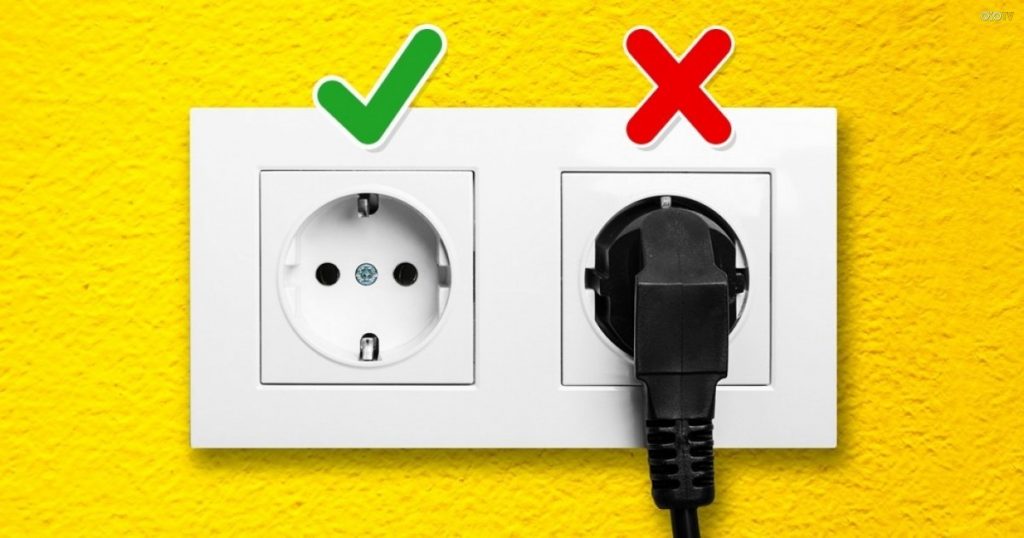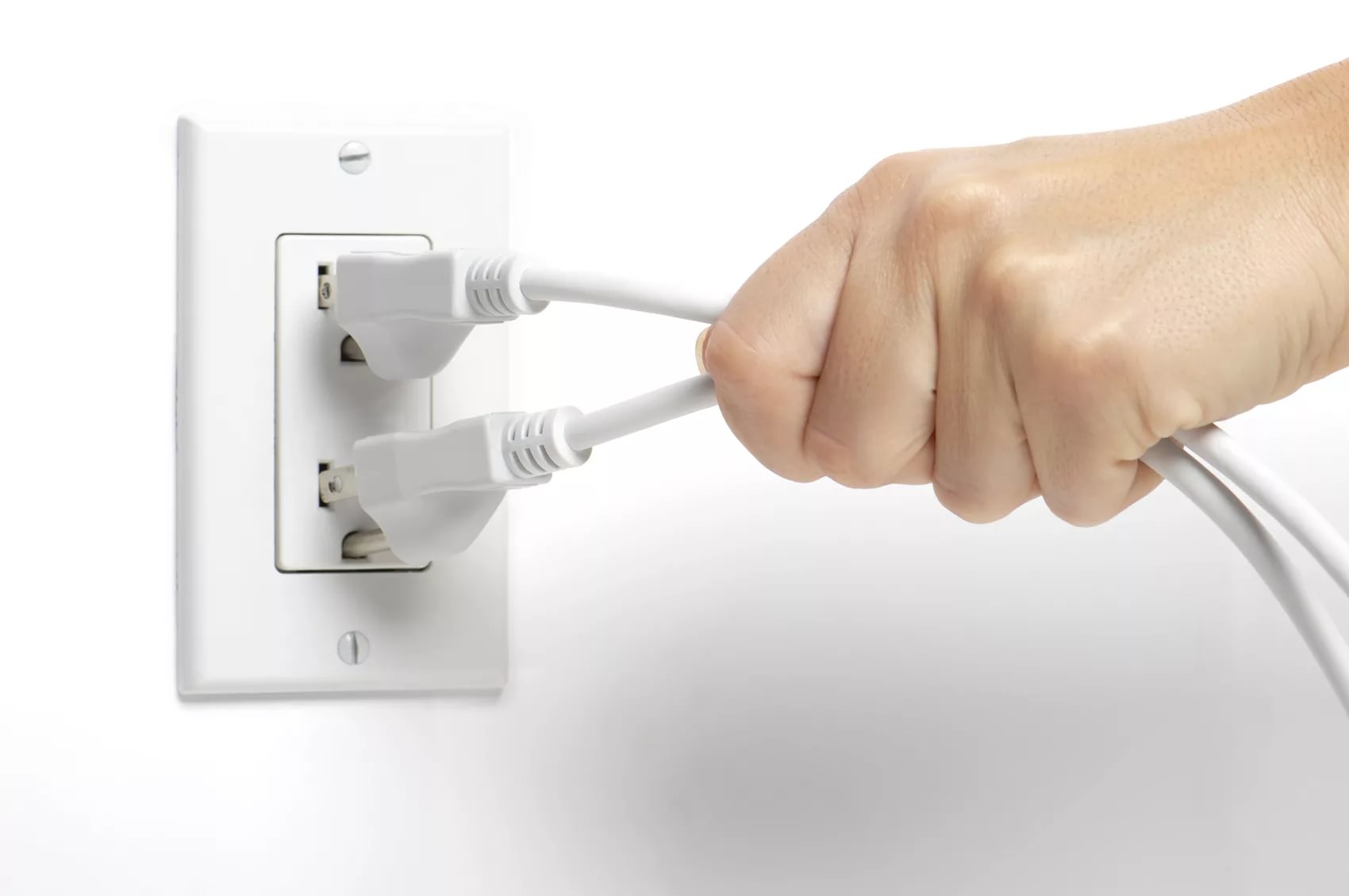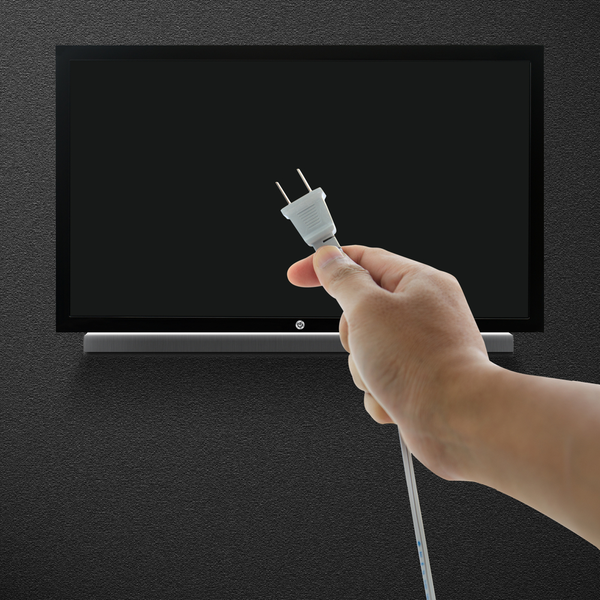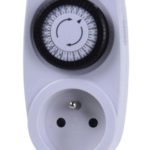Do I need to remove the plugs of non-working appliances?
Do your plugs remain in the socket after you turn off the device? I almost always have it. But I know that after finishing work, many people completely de-energize the device by removing the plug from the socket. How will be correct? Which option is safer and more economical? Let's try to figure it out.

The content of the article
Which is more economical: taking it out or leaving it in?
Experts believe that it is advisable to always unplug all appliances.. It's safer and more economical.
But if you calculate the benefits received, the numbers come out to be very small. Although, with a large number of electrical devices connected to the network, passive costs will increase.
Important! A device connected to the network, even during idle time, still consumes a certain amount of electricity.
You can, of course, leave all devices connected to the network. But you have to be prepared for the fact that they will spend your hard earned money. If a person is scrupulous in terms of expenses, it is better to instill in himself the habit of turning off all devices on time.
Advice. If it comes to long periods of downtime and there is no need to use large household appliances, it is better to turn them off.
One way or another, it will consume electricity. If the living space is not used for its intended purpose for a long time, electricity bills may greatly surprise the tenant.
What is safer: unplugging or forgetting it in the socket?

Safety is due to the high voltage in the network, which in normal mode is constant and does not change. It is suitable for all electrical appliances and is perceived correctly by them.
But there are situations when the voltage increases sharply by tens or even hundreds of times. For example, a thunderstorm can become a catalyst. A lightning strike to wires can cause significant damage to electrical appliances in the house that are not disconnected from the network. But for this it is necessary that the jump be more than 1000 W. Smaller vibrations will not harm household appliances.
Most people don't even think about this problem. They keep expensive equipment constantly on: a refrigerator, a washing machine, a dishwasher and other household items.
If there is a high power surge, they could all suffer greatly. Therefore, it is still better to remove the plugs from the sockets.
What is more useful for the device?

The electrical appliance does not suffer at all, regardless of whether it is plugged in or not connected to the mains.. Experts in the field of electrical engineering note that for the sake of convenience, you don’t have to disconnect household appliances from the network. But before go on a long trip or just be away from home for a long time, you need to take care of it and pull everything out of the sockets.
This will eliminate the risk of appliances catching fire and protect the apartment from fire in the event of a sudden power surge. No one should forget this rule. When leaving, be sure to check the sockets and household appliances to ensure they are completely turned off.
Low power consumption may have a negative effect on low-quality devices. If they are not initially designed for voltage surges and do not have a microcircuit for protection in such a case, they can easily burn out even with a slight fluctuation in current.
Reference. High-quality and expensive household appliances, as a rule, have a high degree of protection and are not susceptible to small voltage surges.
However, if there is no need to use the device every day, it is better to turn it off and let it rest the entire time it is not in use.
To pull out or not: what to do correctly?

The answer to this question cannot be unambiguous. Each person chooses for himself what is more important to him: convenience or cost savings. Most people still choose convenience and leave the plugs of an electric kettle, refrigerator, TV, phone charger and many other household items that are in regular demand in the sockets.
To take care of the safety of electrical appliances, you need to install protective devices that can suppress voltage surges. They can significantly protect household appliances and keep them safe. Such a block will not cost too much. But it will provide an invaluable service during thunderstorms or power surges in the network.
turn off your lights when leaving home
When crossing the road, look left then right.
Nothing!
What nonsense!
Given our electricity prices, it is better to unplug equipment during the summer. In standby mode, printer, microwave, music.a center, a washing machine, a TV with a cinema room can increase the counter by ten euros.
Complete nonsense and ignorance of the basics of electrical engineering, this is in terms of winding tens of euros. Yes, equipment that is not unplugged from the outlet consumes a certain amount of electricity in standby mode, but it is measured in fractions of a watt. Even if you have a couple of dozen partings, they will spend no more than 2-3 kWh in a month in standby mode. it is no more than 20 rubles. They won’t even reach 1 euro. But protection against power surges is done in a different way. But that is another story.
What stupidity. You might think that if there is a sharp increase in voltage in the network, the fire will flare up for several hours and when you come home from work you will have time to put it out, which you will not be able to do while on vacation. A fire only takes a few minutes to destroy your property while you go to your neighbors for matches.
A device connected to the network, even during idle time, still consumes a certain amount of electricity - please explain. how does this happen?
Well, if you follow your logic, then you need to give up electricity altogether, because a power surge, a short circuit of 2 phases, can happen in your presence and you also won’t have time (little can) do anything.
You, Sergey, are right in principle, but the development of electrical engineering does not stand still. In my life I have experienced power surges 2 times. Once the thunderstorm was to blame, the second time it was the stupid electricians who ran 2 phases along one wire. Quite a few electrical appliances burned out in the neighborhood; there was no point in complaining. Gor. the network took the position of “And you prove that it’s our fault.Force majeure, you see.” I had to solve the problem myself. There was no need to reinvent the wheel; smart people had already invented everything. What I did myself was to rebuild the entrance panel. A simplified diagram looks like this: Input machine, voltage relay, counter, differential. automatic and separate automatic circuit breakers for rooms. For each one. I can, if necessary, turn off any one while all other consumers are working. Fortunately, there were thunderstorm triggers; my wife accidentally tore a Chinese garland with her hand when removing the plug. The protection has proven its efficiency and necessity. Details can be found on the Internet. This is something that every owner should have, and then there will be no need to write about all sorts of unfortunately real horror stories.
Will connecting via a Pilot with a switch improve the problem of power surges?
Hello Oksana. A pilot with a switch allows you to disconnect devices from the network, but does not solve the problem of power surges well. Some Pilots are equipped with a cheap Chinese varistor, which, in the event of an increase in voltage, acts as a shunt and to some, very small extent, protects the connected devices. But it is not intended for long-term operation and will quickly burn out if the current is high. Accordingly, all protection will be lost. A voltage relay works differently. There is also a varistor, but its task, using an amplifier, is to command the relay to disconnect the consumer, so in this case the quality and degree of protection is much higher.In addition, since you are interested and asked the question quite competently, I will explain that with the help of a voltage relay you can regulate the disconnection of the consumer when the voltage in the network goes above and below the limit you set and regulate the time after which the relay will again supply voltage to the protected devices. In addition, it shows the network voltage in real time. Very convenient and reliable. The cost is also affordable, depending on the power the price of the issue. I have RN 104 from Novatek. Now it’s about 2300-2500 rubles. It's worth the money. Repairing burnt equipment or the consequences of a fire will cost much more.
The article suffers from a lack of logic. I was especially “pleased” by the picture about how to “correctly” pull out two plugs from a socket by pulling on the wires, and not directly on the plugs. This should result in immediate disqualification.
It’s better for the author to look for his brains, which apparently someone has already taken out,
Have you seen the contacts in a socket like a plug-socket? Previously they were spring loaded. And now N number of procedures and poor contact, then consider the costs, maybe more than YOUR dollar or EURO.
The author is a loser. The voltage may increase, not the power...
Yes, but as the voltage increases, the power inevitably increases))))
Alexander, do you even understand what you wrote? And here the power is, if his devices are turned off, just a plug in the socket.
We are talking about a voltage surge of a certain number of volts, not watts.
I don’t even want to talk about the author - I heard a ringing, but I don’t know what and where...
I'm being philosophical.If the voltage jumps by several volts, the power will also jump by several watts, they are so connected, directly proportional. Of course, we need to talk about a power surge, nevertheless they jump interconnected))))
Volts and Watts...can you tell them apart? I’m not talking about Amps. In “tens”, even “hundreds of times”, multiply a voltage surge of 220 V by 100... how much is the total? correctly 22 kilovolts. And the distance between the poles, you don’t even need to measure, it will flash in one go. The extension cord consumes without load... we are surprised at the electricity bills... what kind of nonsense? The author doesn’t know electrical engineering, Ohm’s law, sit at home and don’t show off your superficial knowledge... there are people here readers are not only smarter than you, but also me...
Among modern devices there are devices with their own switch. They do not have to be unplugged every day. According to Soviet standards (now they are different), a socket guarantees no more than 500 on-off switches of any device, and a toggle switch guarantees no less than 100,000! The socket will not last for 2 years, but for 270 years! Devices that have a standby mode consume very little current, and the lost energy per year at a current of 5 mA will be approximately 40 W*hour = 0.04 kW*hour, very little. When leaving for a long time, especially in the summer, naturally, you need to turn off ALL power-consuming devices, if possible.






Well, you also suggest unplugging the refrigerator from the outlet while the compressor is not working. And, let me note to you, the same ceiling light does not provide for disconnection from the outlet at all, only a switch.